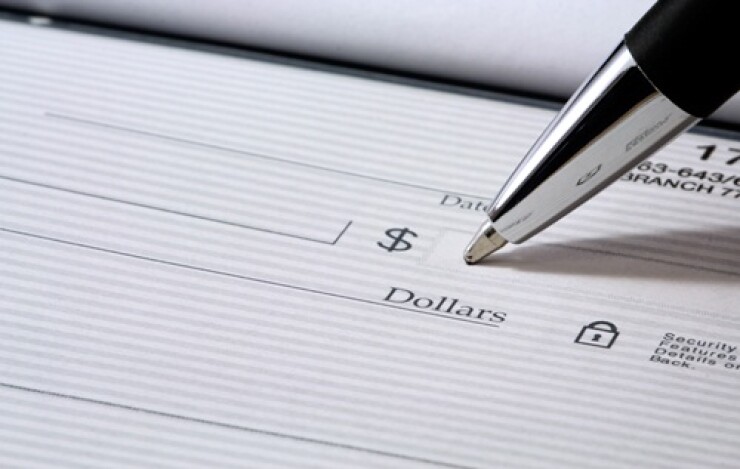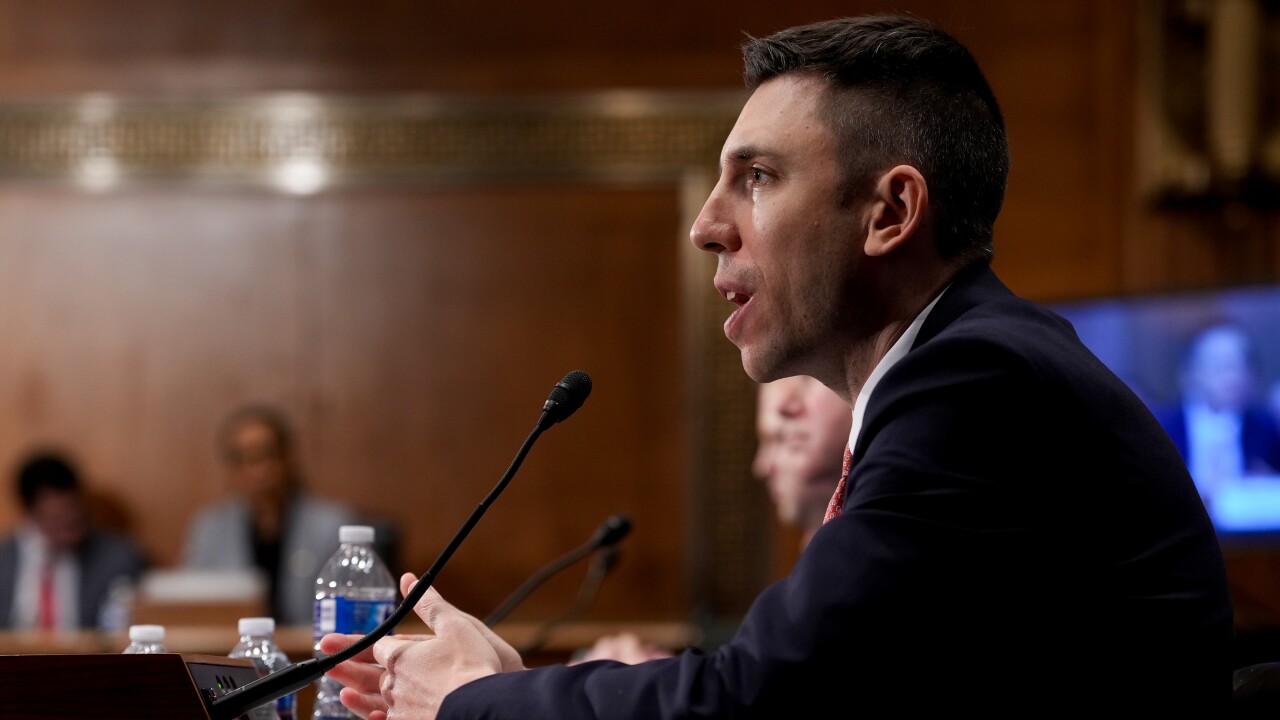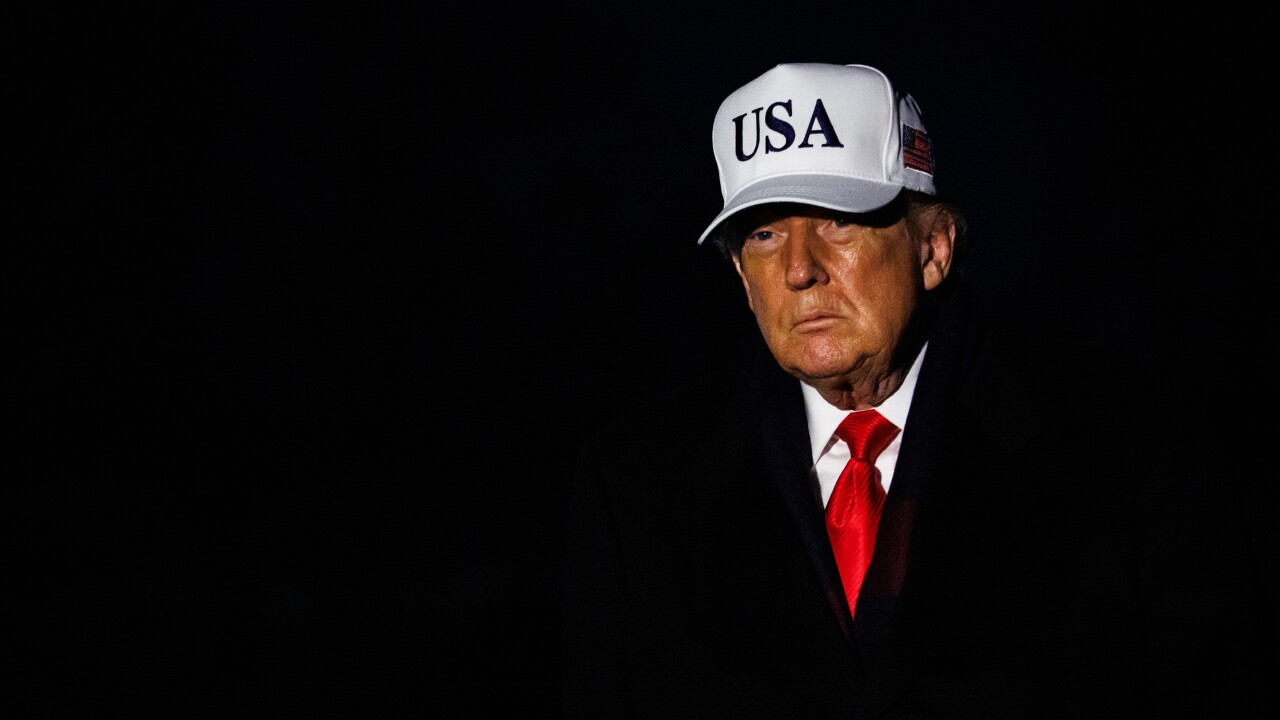
Mark Harrell, the president and CEO of CNB Bank in Berkeley Springs, West Virginia, was so alarmed by the number of counterfeit checks the bank had received in the past year that he felt compelled to show the fake checks to the bank's board.
CNB's in-house fraud experts lined up the counterfeit checks — fakes that the bank had taken losses on — with real checks, side-by-side.
"We presented the checks to the board and said, 'Here's a good one, here's a bad one,' to share with them what we're up against," said Harrell, of the nine-branch, $622 million-asset bank. "It certainly served as an education for the board to see that."
Bank CEOs and chief risk officers have been sounding the alarm for several years about rising check fraud and specifically a big jump in counterfeit checks. Losses from check fraud are approaching debit card levels, according to
Fraud expert Frank McKenna, co-founder of Point Predictive, a San Diego technology firm, said there are inherent problems in the check ecosystem. He traced the evolution of check fraud to the pandemic
"Millions of new fraudsters were radicalized," McKenna said. "When the stimulus funds dried up, there was a whole ecosystem waiting for the next big payoff, and they turned to check fraud."
"The reason check fraud is rampant is because banks are not doing a good enough job of knowing their customers," said Frances Waugh, vice president and operations officer at CNB Bank. "This is a big, big topic right now and big banks need to be getting to know their customers, and also processing things quicker for us smaller community banks."
The USA Patriot Act, passed by Congress in 2001, requires financial institutions to
"Our team spends an inordinate amount of time working through fraud cases including check fraud," said Harrell. "The fact that these are counterfeit checks, and not washed, really doesn't change the message that 'know your customer' is still significant and the amount of fraud is rising dramatically."
A washed check is when thieves use bleach or acetone to remove a check's ink, then rewrite a higher amount and new payee, and deposit the check.
Counterfeit checks require some skill to produce but have largely proliferated due to downloadable computer programs, as well as check stock and ink that can be purchased online. Anyone can digitally print and deposit a large volume of counterfeit checks into fake mule or drop accounts.
"There is a vast underground economy of tools and videos on how to create checks without a whole lot of effort," said Scott Anchin, vice president of operational risk and payments policy at the Independent Community Bankers of America.
A major problem specific to counterfeits is that banks have just 24 hours to contact and return a bad check to the bank of first deposit. If the paying bank misses the 24-hour window, it ends up eating the loss,
"An $80,000 counterfeit check is a big hit to a small community bank," Waugh said.
The depository bank also can try to charge back the money to the customer's account, but if the account was opened by a criminal, the money typically is gone.
Abby Jacobs, electronic banking officer at First National Bank of Ottawa, a unit of $1.5 billion-asset American Commercial Bank & Trust in Ottawa, Ill., said counterfeit checks are harder to deal with than altered checks because the bank has so little time to get reimbursed.
"If the funds are gone and the account has been closed, then it becomes a big fight," with the opposing bank, the bank of first deposit, she said. "And that's where the problem is, because people are able to open bank accounts online at these larger institutions and the customer identification procedures are not being done right."
Moreover, banks' analytical tools can only go so far in detecting counterfeits.
"When you're a bank that's accepting large numbers of mobile deposits, it's very, very difficult — if not impossible — to sift through all of the checks," said Anchin. "Checks are a cultural touchstone that affects consumers."
Acting Comptroller of the Currency Michael Hsu
"Prioritizing fraud prevention is not just about protecting a bank's bottom line," Hsu said. "Consumers who have confidence that their bank is trying to protect them from bad actors will have greater trust in that financial institution."
Bankers also are trying to educate their customers to look at their bank statements as part of a daily routine.
"If you're a small business, when you leave work at the end of the night you set your alarm and you make sure your doors are locked. And when you come in the next morning, you unlock your door, you disarm your alarm and pull up your bank statement and look at that activity," said Harrell. "It should be just part of your ongoing monitoring system of any other asset that you have ingrained in your mind that you protect."






